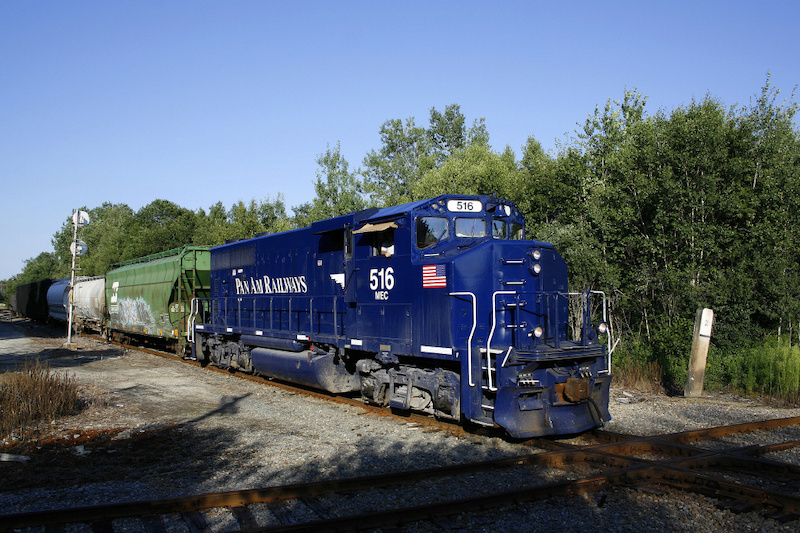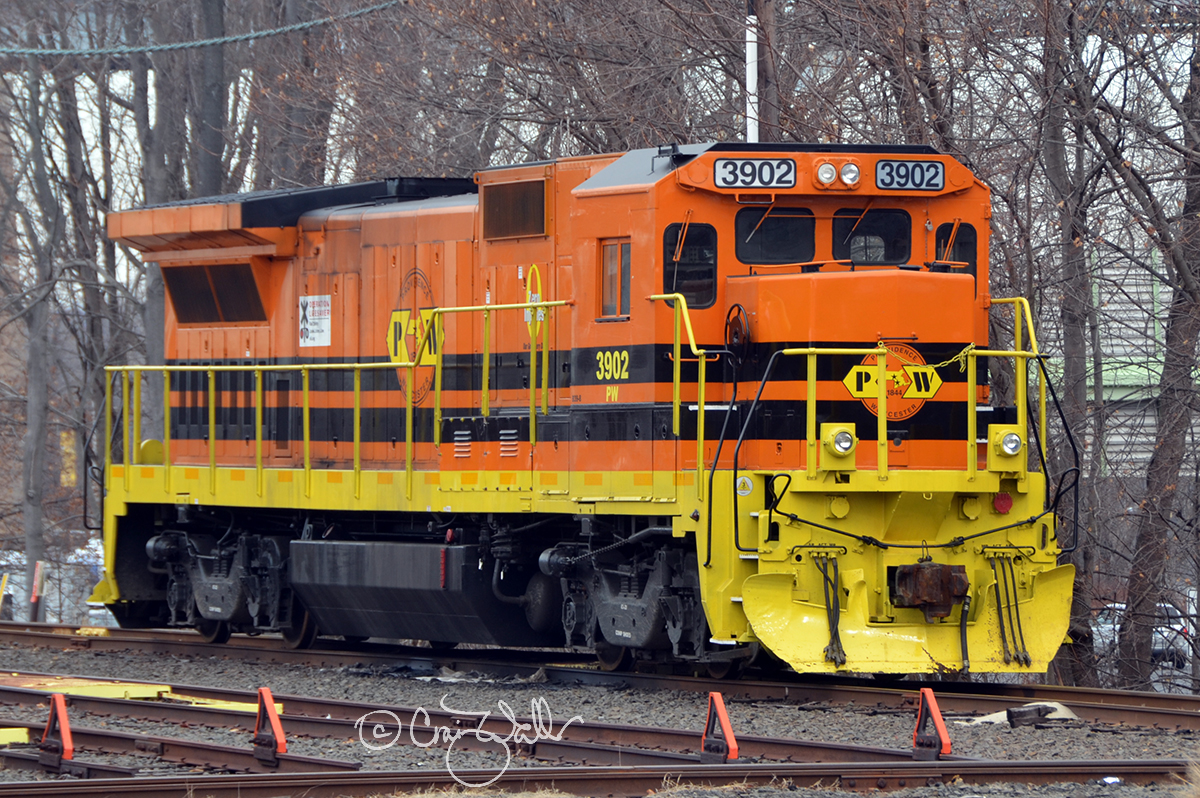F-Line to Dudley
Senior Member
- Joined
- Nov 2, 2010
- Messages
- 9,556
- Reaction score
- 10,449
Just thinking out load here . . .
A lot of new passenger cars are wider in the middle (like 10 6") and need to narrow at the platform level due to the platform clearance issue. Would there be a way to simply add a (6 inch?) permanent gap filler just below the doors that doesn't need to be withdrawn and build platforms (6 inches?) further from the track center?
Trying to visualize this, I think it could be done easily by simply making the trap drop-down hatch longer. Note the picture of the Viewliner "coach" below. There is a big difference due to the camber of the car side.
I can't see much of a clearance issue since the thing wouldn't stick out much further than the actual widest part of the car, and even if things had to be cleared there can't be that many issues. A new standard regulation needs to be developed but it seems like it just might settle this issue.
I know someone is going to say that it's a safety issue since someone might get hit by it, but no one should be standing 6 inches from a moving train anyway.
No...that wouldn't be possible. All railcars are classified by the AAR standards organization by type and are stamped with multi-digit codes on the side for dimensional and weight properties. This is because the entire North American rail network--U.S., Canada, Mexico, and Panama Canal Zone (via ship-to-rail carfloat)--is standardized for NAFTA and assumes that any car will be able to move anywhere across the continental network by traveling routes that meet/exceed the properties of those code-stamped dimensional specs. The line-rating matchups are also inclusive of non-platform clearance obstructions like bridge guardrails, signal head placement, and undercarriage obstructions like third rail. As well as crucially the weight, as right now the North American network is fragmented mid-transition between lines certified for new-standard 286,000 lb. railcars vs. old-standard 263,000 lb. railcars.
The codes allow a carrier to get handed a manifest of the cars they're receiving, cross-ref the codes on the sides of cars with the codes their designated route is certified for, and be able to tell right a way if a mis-routed overdimension car has to be pulled & rejected. It's why mis-routing whoopsies like this are incredibly rare vs. the thousands of daily train schedules over hundreds of thousands of route miles across the continent. It also allows for planning special-order overdimension jobs that are the rail equivalent of special-order Interstate Highway wide-loads...stuff that overspills so big it's in true "rules of road" violation and needs special hands-on escorts to move at all. That's most often seen with moves of giant electrical transformers, where the pupose-built flatcar itself has rollers on it to stop for manual-shifting the transformer load to hang off one side of the car when it encounters a side obstruction. They've actually routed a big-ass transformer all the way down the Plymouth Line--full-highs and all--during a Sunday shutdown about 15 years ago during a slow-speed pre-planned special escort move. They could plan it--and all the individual adjustments they had to make to the transformer load's lateral placement en route--because all line features were coded and cross-reffed with the codes for that special-order load-shifting flatcar.
As you can see on the provided link at top of post, passenger cars are included in the coding scheme as well. This is because when they're sent out for offsite repair or sold/traded they're manifested on normal freight trains. Also...while not a feature today excluding the one-of-a-kind Amtrak AutoTrain...up until the private-to-Amtrak handoff of the early-1970's there were such things as regular-service mixed pax/freight trains, plus Amtrak used to carry the mail from D.C. to Boston on NEC or Inland Northeast Regionals until they formally got out of that business in 2004 and sold off their mail boxcar fleet. Most passenger cars are smaller enough than the average freight car that coding mismatches are never an issue, but at 16'2" tall Amtrak Superliners are Plate E's that you wouldn't, for instance, be able to squeeze under Memorial Drive on the Grand Junction so are something less-than-universal even for non-revenue physical moves (nevermind that the low-only boarding doors make them useless for revenue service in some parts of the country). Some rare exceptions like the Rocky Mountaineer's Ultra Dome lounge cars are 18 ft. tall, slotting them in the same Plate F+ category as autoracks. All Plate F or greater passenger cars are thus 8-inch boarding only because of the lateral suspension issues in passing 48-inch gapless platforms error-free.
Because this is all internationally standardized it's not possible to kludge side-hanging doodads that go outside the coded clearance properties for that car. It would require a higher/less-inclusive code just like a freight car that has door handles or grab bars pushing out the envelope. An Amfleet tube, being an odd duck smaller-by-shape than the envelope (like a tank car) might be able to get away with that kind of appendage. But nearly all pax cars have flat sides or buff out to the full clearance envelope, meaning they can't wear such a mechanism within compliance. The only place to stuff a bridge plate would be under the door lip. In the case of the actual Siemens cars with flip-down gap fillers used by Brightline/Amtrak Midwest/VIA the fillers come from inside the door and flip down to touch the resting platform surface because shooting straight out the side would uselessly bang the side of the platform; it has to come from an upward not side angle to touch cleanly. That's why shoot-out bridge plates are only a feature you'll ever see on low-boarding cars like buses, trolleys, or 8-inch platform -only cars like the Superliners, BLV's, Chicago-style gallery cars.
In short...if you want to go mad-scientist with onboard gap fillers you're going to have to memorize the AAR clearance book for what is/isn't kosher. A lot of the stuff that looks plausible to the eye test indeed gets cut down by not being portable across enough of the network to matter. In which case even FRA dimensional exemptions aren't a good idea because you'll pay too much of a unit price premium for the mfg. scale penalty of the unorthodox dimension rating vs. something any old buyer on a "conventionally" rated part of the network could evaluate. For one...because that's also going to limit what freight manifests you're allowed to attach the modded cars to for factory delivery or to get sent out for repairs. So it's a very much a "dollar$ and $sense" consideration to square as much or more than "is it physically possible with the right exemptions" brain-teaser.
Last edited:



_1_(42505820344).jpg/640px-CSX_Transportation_-_212_%26_761_diesel_locomotives_(Marion%2C_Ohio%2C_USA)_1_(42505820344).jpg)




.jpg/640px-CP_8137_at_Chesterton_(31292201928).jpg)

.jpg/800px-MEC_316_(4581355846).jpg)

